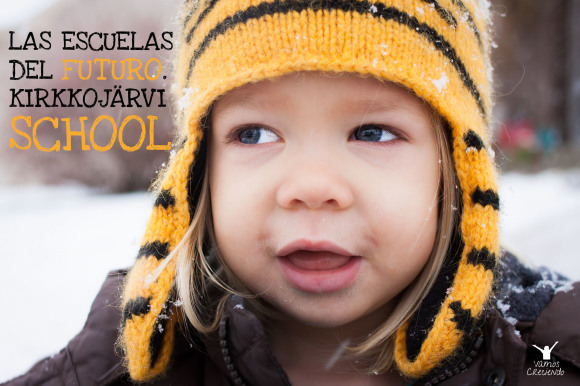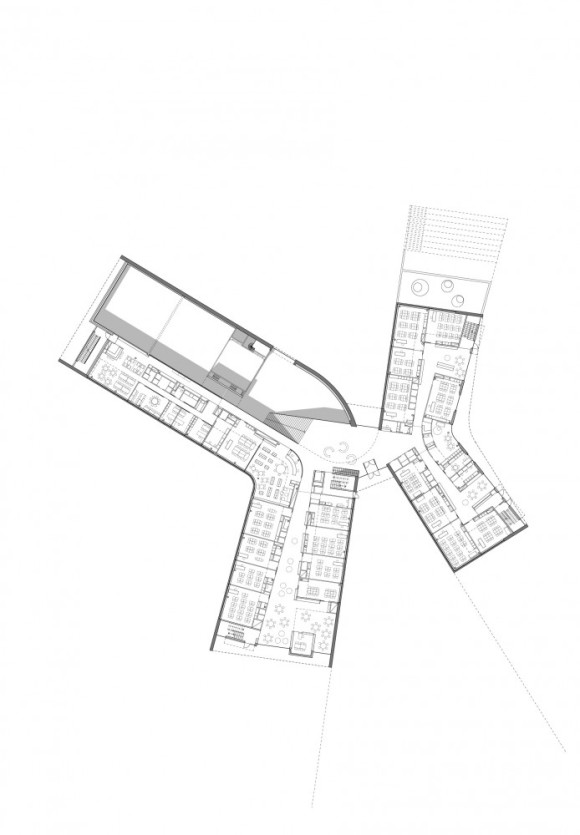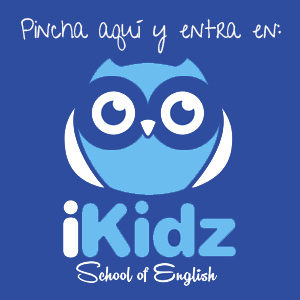
photo credit: nicholasjon via photopin cc
In July I wrote first in a series of post, I want to go in analyzing which are considered the 11 best schools in the world, not only for its features pedagogically, but also, for how to integrate new technologies into their system and how they use natural means to create sustainable environments.
The school of which I spoke in the post July was Ritaharju School, a school whose main feature is the use of new technologies in education. But not all Finnish schools emphasize this aspect. There are many other special features that make the 11 best schools in the world.
Today I will talk about Kirkkojärvi School, another Finnish school that has many aspects in common with Ritaharju but it stands out for how to integrate immigrants and students in your school, by using sustainable architecture.
I consider it important to know these educational models, to see that the change we can always talk, and we are aware that there are places in the world where education is, but the most important, one of the most important aspects of society.
The importance of architecture in these centers.
It seems that sometimes we forget that children spend almost more time in school than your own home. Would not you noticed that schools are generally cold places and built in concrete? Fancy being in a place like this?
Kirkkojärvi School It is the result of a draft prepared by Workshop Architects, a firm of architects who submitted and won the project for the construction of this school. The project began calling themselves "Veljet" and came to be called "Brothers", name that aptly describes the organization of the building.
Himself the fijáis, the center is comprised of two curves. In most of them, the older brother", high school and public areas as the dining room and the gym are. While small curved welcomes domestic spaces of the elementary school.
But distribution is also considered other important points:
- The classes share common areas, lobbies and entrances where children do much of daily life.
- The distances between some areas and others are very short, so that students are not long for long corridors. Further, this is something that invites children to go to playgrounds and recreation areas.
- Each zone has its own color. Facilitating the mobility of the building.
- The school is constructed so as to make the 100×100 sunlight. The primary court is oriented so that in the morning sun, while the school yard, whose days are longer, receives the afternoon sun.
As you can see, functionality, comfort, efficiency and ecology are the main features of this school.
Something that I loved this center and that seems quite common in Finland, is the use by the community of the school facilities. When children go home, School opens its doors to the neighborhood associations, so they can enjoy facilities such as the gym, the music room or craft room. Practical, ¿Appears in the?
But it is not the architecture that makes Kirkkojärvi School It is a great school. Undoubtedly, what I liked most is how this center is ready to welcome immigrants and serve students with special needs.
A school for all.
With a 43% of immigrants in the center, the school has special preparation groups. This means that students who come new and not know the language, during the first year They will study in groups 12 students maximum, and during the next two years will receive a specific monitoring. These children study Finnish as a second language and have their native language class 1 the 2 hours a week. The system is prepared so that children do not handle Finnish, They start giving in this language subjects as art, sports and crafts, later, when they begin to master the language, move to more complicated subjects. Quite logical, ¿no?
Another "interesting" data of this school is that if more than three families of a community request that your child be taught a particular religion, the middle class must prepare for this. This means that in Kirkkojärvi School there are groups ranging from Lutheran (the 90% in this center) until Russian Orthodox Islamic past, Catholics, Hare Krishna y Bahai. If a child is not part of any religious group, will attend ethics class.
Y, What about language learning in these schools? Obviously, in addition to the Finnish, children learn other languages.
Generally, students choose which language can be studied as the first foreign language. For this center the first foreign language is English, but could also Choose among Swedish, German or French. The language program is constructed so that nearby schools agree to offer each a different language, so that students can choose one community and have options. The second language learning in Kirkkojärvi It is Swedish.
How the number of students per class is set? Depending on the developmental stage and group needs what number of students will decides. So they have groups for students with learning disabilities and other for students with emotional problems.
Undoubtedly, Kirkkojärvi School it should be between 11 most innovative schools in the world. It is a school that is actually designed by and for students. Every detail, from its architecture, to what is taught in the classroom aims to improve the education and development of these children. Is it for this that Finland is an educational role model?
If you want to know a little more of this school, I leave a video with some images of the center.
In the coming months I will continue writing about these 11 schools, from my point of view, They should serve as a model.
Thanks for your time.
Happy week!
"The first task of education is stirring life, but leave it free to develop. "
Maria Montessori
Tags: architecture, Education, school, Finland, future, immigrant, innovative, ICT



 Español
Español English
English Français
Français Deutsch
Deutsch 中文(简体)
中文(简体) Português
Português

I was delighted to read the comments that you make about education in Finnish schools, hopefully this model was implanted in Spain. I think it's a matter of mentality and consider this as civic model, where the former is the human being , It applies in all sectors, not only the educational, I have been able to experience working at Nokia Siemens Networks, in Spain, where the office space had much to do with the space created in the classroom, as predominant color, the light, open spaces, without offices, the furniture was informal, modern and with a great awareness for the environment, rest areas, so that workers relate sientieran comfortable and puedieran, He breathed freedom, this does not happen with Spanish companies.
Thank you for your blog
Esther
Thanks for your comment Esther!
I think I hear you talk about companies and give hope to many people who think that there are other possibilities to what we have. I totally agree that it is a question of mentality, and until the change will not achieve anything, or education or social level.
Thanks again for your contribution to blog 😀
A hug,
Cristina
Good to see there as educational opportunities as interesting and innovative as in Finland. In developing countries there is a desire and a dream to have schools as the country has. I thank you for sharing this new learning experience.
Best regards.
Thank you very much for your comment!
Of course, We must be informed and know the alternatives available to, if it's posible, implement.
A greeting,
Cristina